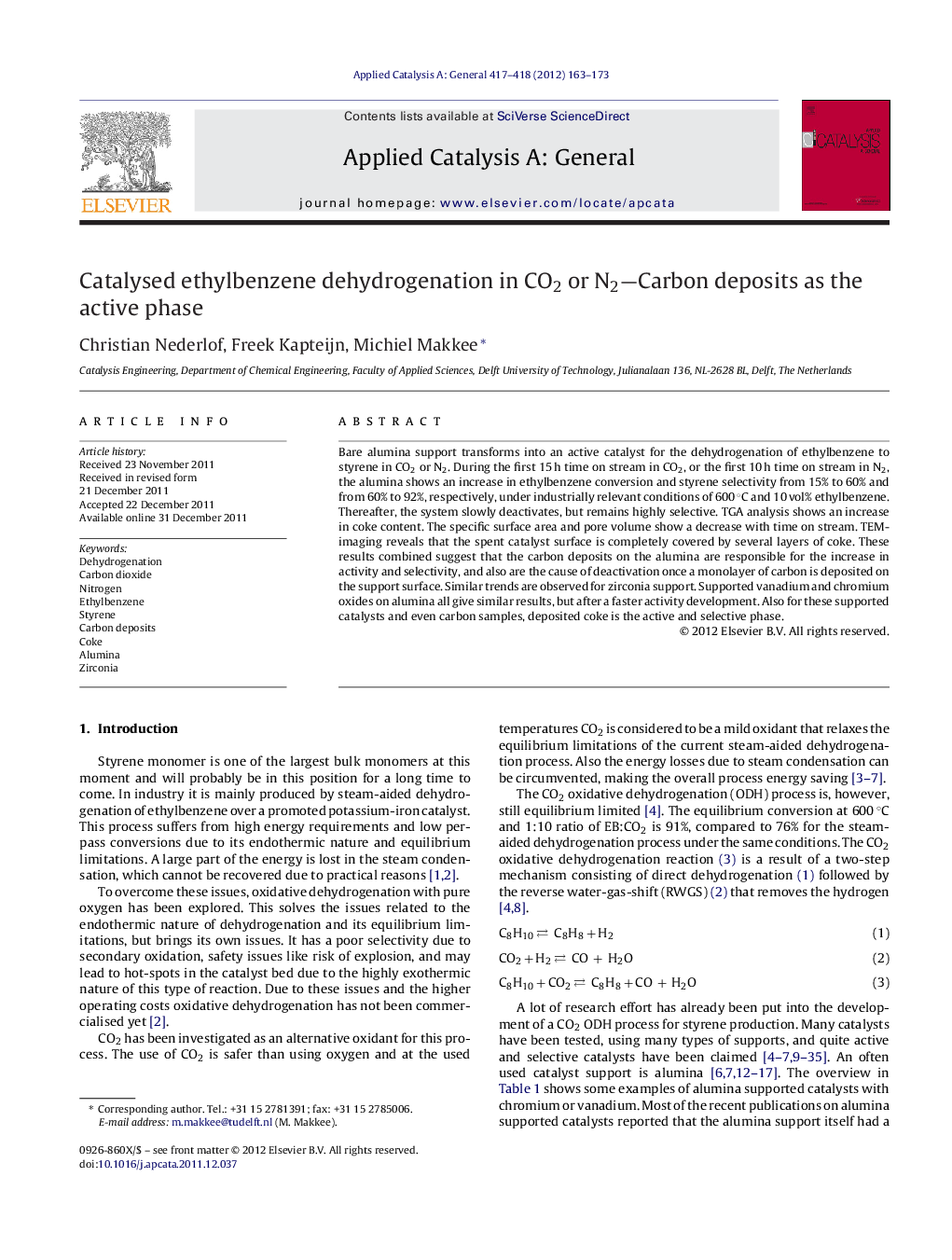| Article ID | Journal | Published Year | Pages | File Type |
|---|---|---|---|---|
| 41173 | Applied Catalysis A: General | 2012 | 11 Pages |
Bare alumina support transforms into an active catalyst for the dehydrogenation of ethylbenzene to styrene in CO2 or N2. During the first 15 h time on stream in CO2, or the first 10 h time on stream in N2, the alumina shows an increase in ethylbenzene conversion and styrene selectivity from 15% to 60% and from 60% to 92%, respectively, under industrially relevant conditions of 600 °C and 10 vol% ethylbenzene. Thereafter, the system slowly deactivates, but remains highly selective. TGA analysis shows an increase in coke content. The specific surface area and pore volume show a decrease with time on stream. TEM-imaging reveals that the spent catalyst surface is completely covered by several layers of coke. These results combined suggest that the carbon deposits on the alumina are responsible for the increase in activity and selectivity, and also are the cause of deactivation once a monolayer of carbon is deposited on the support surface. Similar trends are observed for zirconia support. Supported vanadium and chromium oxides on alumina all give similar results, but after a faster activity development. Also for these supported catalysts and even carbon samples, deposited coke is the active and selective phase.
Graphical abstractFigure optionsDownload full-size imageDownload high-quality image (91 K)Download as PowerPoint slideHighlights► Bare alumina support becomes active during operation under reaction conditions. ► Alumina increases conversion and selectivity up to 60% and 93%, respectively. ► Deactivation of the catalyst remains the largest issue to be solved. ► Formed carbon selectively poisons highly active and unselective sites.
